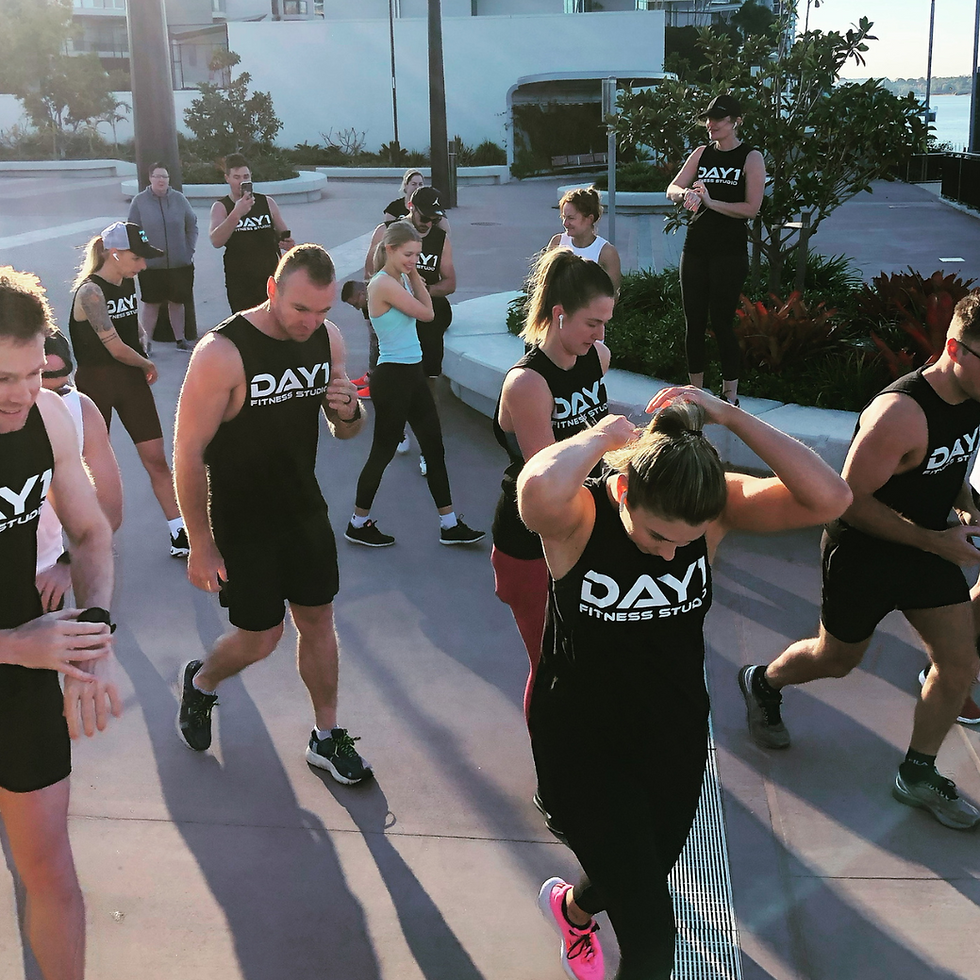Bridge To Brisbane Time: Managing a tight ITB!
- Brandon @ Day1

- Sep 4, 2023
- 3 min read
Updated: Oct 4, 2023
RUN CLUB IS BACK - 7:30AM SUNDAYS - MEET AT BRETT'S WHARF, PORTSIDE
JOIN US IN PREPERATION FOR THE BRIDGE BRISBANE
If you're a runner or have just started running in prep for the Day1 Bridge To Brisbane team you may be feeling some DAM tight hip flexors! Well there's a very good chance you've for yourself a very very tight ITB, or iliotibial band. This fibrous band of tissue plays a crucial role in your lower body's movement, and understanding it is essential for maintaining a healthy, pain-free lifestyle. Tightness may be unavoidable at times due to the environment we run in, however proper pre training, warm up and recovery methods go a LONG way in bouncing back for your next run!
What is the ITB?
The iliotibial band, or ITB for short, is a thick band of connective tissue that runs along the outside of your thigh, extending from your hip to your knee. It connects the muscles of your buttocks (gluteus maximus) to the muscles on the outer part of your thigh (tensor fasciae latae and vastus lateralis). The ITB plays a significant role in stabilizing the knee joint and facilitating smooth movement of the hip and knee during activities like walking, running, and cycling.

Warming Up the ITB
Before diving into the reasons for ITB pain and tightness, it's essential to understand why warming up the ITB is crucial. Like any other muscle or tissue in your body, the ITB benefits from a gradual warm-up. Warming up increases blood flow to the area, making the ITB more pliable and less prone to injury. Additionally, warming up the ITB can help prepare the surrounding muscles and joints for the demands of your chosen activity, reducing the risk of strain and discomfort. This can be as simple as a walk, some specific movements or interval slow running before increasing intensity.
Reasons for ITB Pain and Tightness
1. Overuse: One of the most common causes of ITB pain is overuse. Activities like long-distance running, cycling, or repetitive motions can lead to irritation and inflammation of the ITB. This condition is often referred to as ITB syndrome.
2. Muscle Imbalances: Imbalances in the strength and flexibility of the muscles surrounding the ITB can contribute to pain and tightness. Weak glutes or tight hip flexors can put added stress on the ITB during movement. Generally speaking, we find this to be the most common reason! Underactive Glutes!
3. Poor Running Form: Runners may experience ITB pain if they have improper running form. Overpronation, or excessive rolling of the foot inward, can cause the ITB to rub against the femur, leading to discomfort.
Recovery and Repair
1. Stretching: Regular stretching can help improve the flexibility of the ITB and surrounding muscles. Target stretches for the ITB, hip flexors, and glutes to alleviate tightness.
2. Strengthening Exercises: Strengthening exercises for the glutes and hip abductors can help address muscle imbalances and reduce strain on the ITB.
3. Foam Rolling: Foam rolling is an excellent self-massage technique to release tension in the ITB. Roll slowly along the outside of your thigh to break up adhesions and improve blood flow.
Look, it's one of those stubborn areas that are difficult to maintain but we don't want it to be a deterrent from you running! Simply apply a proper warm, proper cool down and a focused stretch/roll out to give your body the best chance!
See you at Run Club!




Comments